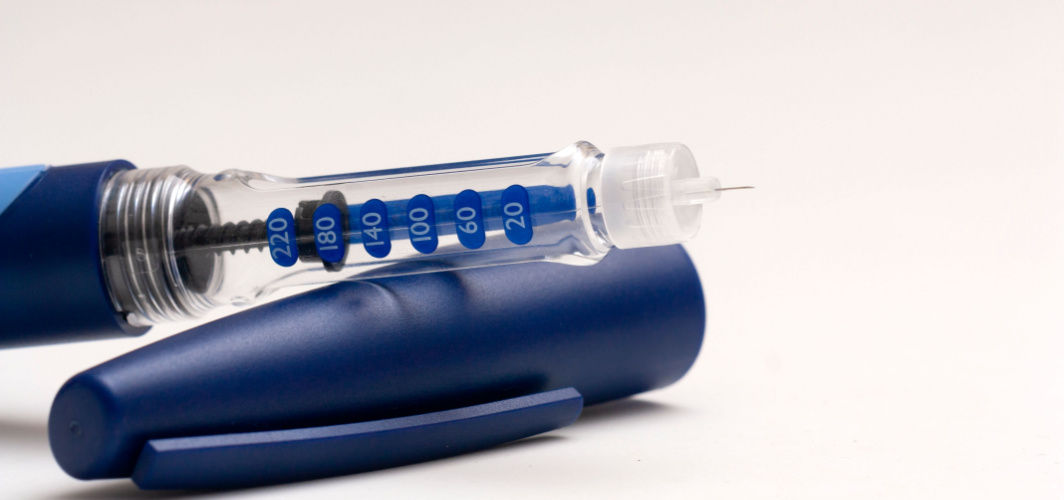Diabetes Management
What is the Difference between Diabetes Insipidus and Diabetes Mellitus?
2 min read
By Apollo 24|7, Published on - 12 September 2023, Updated on - 14 September 2023
Share this article
0
0 like
_0.jpg?tr=q-80)
Unlike popular belief, diabetes insipidus is not just another type of diabetes. Other than having the same first name and some of the common symptoms, diabetes insipidus, and diabetes mellitus are completely different from each other in terms of causes, effects on the body, and treatments.
Diabetes Mellitus
Diabetes mellitus is a chronic disease that affects the body's ability to produce or use insulin. There are several subtypes of diabetes mellitus, with type 1 and type 2 being the most common.
Type 1 Diabetes: It is an autoimmune disease where the immune system mistakenly attacks and destroys insulin-producing beta cells in the pancreas. As a result, people with type 1 diabetes require insulin injections or an insulin pump to regulate their blood sugar levels.
Type 2 Diabetes: This is a metabolic disorder characterized by insulin resistance, where the body's cells don't respond effectively to insulin. It is often associated with lifestyle factors like obesity and physical inactivity, although genetics also play a role. Type 2 diabetes can typically be managed with lifestyle changes, oral medications, and in some cases, insulin.
Diabetes Insipidus
Diabetes insipidus, on the other hand, is a rare condition that has nothing to do with blood sugar levels. It affects the body's ability to regulate water balance, leading to excessive thirst and urination. There are several types of diabetes insipidus, but the most common is called central diabetes insipidus, which is caused by a deficiency of vasopressin, a hormone that helps the kidneys reabsorb water.
Impact, Causes & Treatment
|
Diabetes Mellitus |
Diabetes Insipidus |
|
|
Impact on the body |
Affects blood sugar regulation |
Affects water balance |
|
Cause |
Body’s inability to produce or utilise insulin |
Issue with making or using vasopressin (or antidiuretic hormone) |
|
Treatment |
medication, diet, and lifestyle changes |
Medications that mimic the action of vasopressin |
Conclusion
Understanding these differences is crucial for accurate diagnosis and effective management. If you or someone you know is experiencing symptoms related to diabetes, it's essential to consult a healthcare professional for a proper evaluation and personalized treatment plan.
Diabetes Management
Leave Comment
Recommended for you

Diabetes Management
What are the Factors that Influence Insulin Action?
Insulin action refers to the ability of insulin to regulate blood sugar levels and various metabolic processes in the body. Insulin action is influenced by factors like, your weight, physical activity, diet, hormones, medications, stress, sleep, age and genetics. Insulin sensitivity varies among individuals and can be affected by lifestyle and genetic predispositions. Maintaining a healthy lifestyle through diet, exercise, and stress management is essential for optimal insulin action and metabolic health.

Diabetes Management
Innovations That Are Making Living With Diabetes Easier
Advancements in science and technology have revolutionised diabetes care, introducing innovations that simplify the lives of individuals with diabetes. CGM systems provide real-time blood sugar data, enhancing control and reducing hypoglycemic episodes. Insulin pens and pumps offer precision and convenience, while artificial pancreas systems automate insulin delivery based on glucose levels. Telehealth and diabetes apps enable remote monitoring and personalised guidance. Additionally, advanced insulin formulations improve post-meal blood sugar control. These innovations empower individuals to manage their condition more effectively, enhancing their overall quality of life.

Diabetes Management
10 Simple Lifestyle Changes To Lower Your Risk of Diabetes
Type 2 diabetes can usually be prevented by taking some simple steps. Lifestyle changes such as reducing carb intake, exercising regularly, reducing portion sizes, consuming a high-fibre diet, limiting alcohol consumption, and incorporating healthy fats can significantly reduce the risk of diabetes.
Subscribe
Sign up for our free Health Library Daily Newsletter
Get doctor-approved health tips, news, and more.
Visual Stories

8 Fruits That are Incredibly Healthy for Diabetes
Tap to continue exploring
Recommended for you

Diabetes Management
What are the Factors that Influence Insulin Action?
Insulin action refers to the ability of insulin to regulate blood sugar levels and various metabolic processes in the body. Insulin action is influenced by factors like, your weight, physical activity, diet, hormones, medications, stress, sleep, age and genetics. Insulin sensitivity varies among individuals and can be affected by lifestyle and genetic predispositions. Maintaining a healthy lifestyle through diet, exercise, and stress management is essential for optimal insulin action and metabolic health.

Diabetes Management
Innovations That Are Making Living With Diabetes Easier
Advancements in science and technology have revolutionised diabetes care, introducing innovations that simplify the lives of individuals with diabetes. CGM systems provide real-time blood sugar data, enhancing control and reducing hypoglycemic episodes. Insulin pens and pumps offer precision and convenience, while artificial pancreas systems automate insulin delivery based on glucose levels. Telehealth and diabetes apps enable remote monitoring and personalised guidance. Additionally, advanced insulin formulations improve post-meal blood sugar control. These innovations empower individuals to manage their condition more effectively, enhancing their overall quality of life.

Diabetes Management
10 Simple Lifestyle Changes To Lower Your Risk of Diabetes
Type 2 diabetes can usually be prevented by taking some simple steps. Lifestyle changes such as reducing carb intake, exercising regularly, reducing portion sizes, consuming a high-fibre diet, limiting alcohol consumption, and incorporating healthy fats can significantly reduce the risk of diabetes.